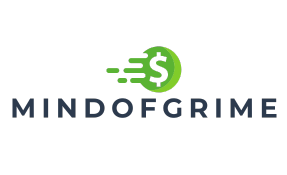Table of Contents
ToggleDebt can feel like that unwelcome guest who overstays their welcome, lounging on your couch and eating your snacks. It creeps in quietly, but before you know it, it’s throwing wild parties and leaving your finances in disarray. Luckily, there are simple debt solutions that can help kick that pesky visitor to the curb without breaking a sweat.
Understanding Simple Debt Solutions
Simple debt solutions provide clear pathways to regain financial control. Strategies like budgeting and debt consolidation help individuals tackle their outstanding balances effectively. Budgeting allows people to track their income and expenses closely. Many find that identifying unnecessary spending leads to significant savings that can go directly toward debt repayment.
Debt consolidation simplifies payments by combining multiple debts into one single loan. This approach often results in lower interest rates, making it easier to manage monthly payments. Another effective option involves negotiating with creditors for reduced interest rates or extended payment plans. Engaging in open communication with creditors can lead to more favorable repayment terms.
Moreover, credit counseling offers personalized assistance for debt management. Nonprofit credit counseling agencies provide resources and guidance to help individuals develop spending plans. Participants typically benefit from education on financial literacy and debt repayment strategies.
It’s important to consider debt settlement as one possible solution. This method involves negotiating a lower payment amount to settle debts for less than owed. Success relies on careful consideration of the impacts on one’s credit score. Individuals can also explore personal loans designed specifically to pay off existing debt.
With the right approach and tools, managing debt becomes more straightforward. Simple debt solutions empower individuals to establish a clear path toward financial stability and ultimately lead to a debt-free life.
Common Types of Debt

Understanding common types of debt can help individuals manage their financial situations effectively.
Credit Card Debt
Credit card debt ranks among the most prevalent types of consumer debt. High-interest rates often accompany these debts, making repayment challenging over time. Accumulating charges can quickly lead to financial strain. Many individuals find themselves making only minimum payments, which prolongs the debt cycle. Strategies like balance transfers or debt repayment plans can provide relief by consolidating or lowering interest rates. Recognizing spending habits through budgeting allows borrowers to redirect funds toward reducing credit card balances. Utilizing credit responsibly and maintaining lower utilization rates helps prevent excessive debt from accumulating.
Student Loans
Student loans represent another significant burden for many graduates. Total student loan debt in the US surpassed $1.7 trillion in 2023, impacting millions. Repayment terms can vary widely, with federal loans typically offering more flexible options than private loans. Many borrowers face juggling multiple loans with different interest rates and payment schedules. Income-driven repayment plans can assist those with fluctuating incomes, tying monthly payments to earnings. Refinancing opportunities may lower interest rates, but careful consideration of benefits and drawbacks is essential. Exploring forgiveness programs can provide pathways for qualifying borrowers to eliminate portions of their debt over time.
Benefits of Simple Debt Solutions
Achieving financial stability becomes easier with simple debt solutions. Budgeting plays a crucial role in tracking income and expenses, often highlighting areas to cut back on spending. Debt consolidation streamlines multiple debts into one payment, leading to lower interest rates and reduced monthly payments.
Negotiating with creditors offers the chance to secure better repayment terms. Many individuals find that personal finance skills improve through these negotiations, fostering a sense of empowerment. Utilizing credit counseling provides personalized advice tailored to individual financial situations.
Debt settlement can also provide significant relief, allowing individuals to pay less than what they owe. It’s essential to understand how this approach affects credit scores, as it can have long-term implications.
Addressing credit card debt through balance transfers can reduce interest expenses and minimize repayment timelines. Exploring income-driven repayment plans for student loans serves as another avenue for making debt more manageable.
Refinancing student loans further reduces payments and interest rates, improving overall financial health. Forgiveness programs allow eligible borrowers to eliminate debt after meeting specific criteria, representing an important option.
Simple debt solutions enhance financial literacy and create a clear pathway toward a debt-free future. Individuals often report increased confidence and better management of their finances through these strategies. Implementing structured plans transforms overwhelming debt into a manageable and less stressful situation.
Strategies for Implementing Simple Debt Solutions
Implementing simple debt solutions involves practical strategies that anyone can follow to regain control over their finances.
Creating a Budget
Establishing a budget represents a crucial first step toward managing debt effectively. Track income and expenditures closely to identify spending patterns. Allocate funds for essential expenses and designate specific amounts for debt repayment. Using budgeting tools or apps simplifies this process and makes tracking progress easier. Examine spending regularly to pinpoint areas for potential savings. Redirect any extra cash towards reducing outstanding debts. Consistent monitoring helps adjust spending habits and ensures adherence to the budget plan, ultimately leading to improved financial health.
Debt Snowball Method
The Debt Snowball Method focuses on paying off debts in a prioritized manner, which can motivate individuals to stay on track. Start by listing debts from smallest to largest, regardless of interest rates. Concentrate on paying the minimum on all debts, but direct any extra money toward the smallest debt first. Once the smallest debt is eliminated, move on to the next one. This approach builds momentum as each debt is paid off and increases the sense of accomplishment. Adopting this method engages individuals and provides a structured path to becoming debt-free while enhancing confidence.
Negotiating with Creditors
Negotiating with creditors offers individuals an opportunity to secure better repayment terms. Initiating a conversation about modifying payment plans can result in lower interest rates or temporary pauses on payments. Prepare by gathering relevant financial information and articulating specific needs during discussions. Creditors often appreciate proactive communication and may provide more favorable terms to help ensure the borrower continues to make payments. Document all agreements in writing to avoid misunderstandings later. This strategy empowers individuals to take charge and reduce the financial burden effectively.
Embracing simple debt solutions can significantly transform one’s financial landscape. By implementing effective strategies like budgeting and debt consolidation, individuals can regain control over their finances. Tracking spending and redirecting funds toward debt repayment fosters a sense of empowerment and confidence.
Negotiating with creditors opens doors to better repayment terms, while personalized assistance from credit counseling can provide additional support. These approaches not only alleviate the burden of debt but also enhance financial literacy.
Ultimately, adopting these straightforward solutions paves the way for a debt-free future, turning financial chaos into manageable progress. With determination and the right tools, anyone can achieve lasting financial stability.










